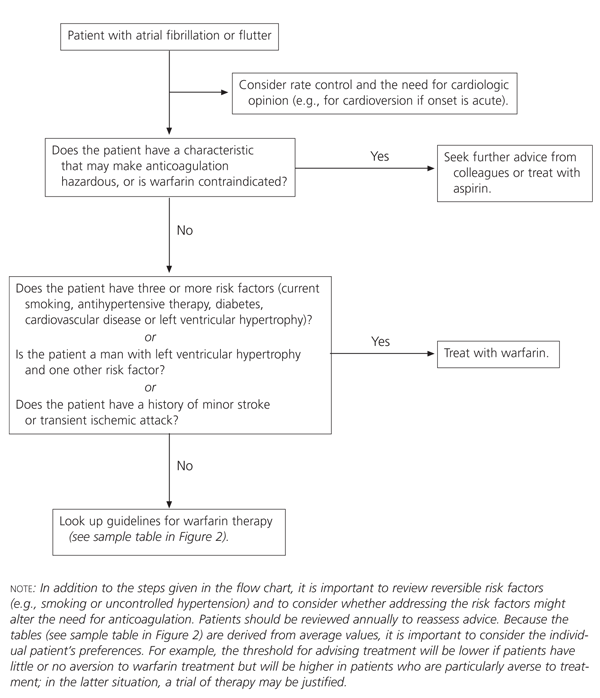
Am Fam Physician. 2000;62(6):1381-1385
Although anticoagulation decreases the risk of stroke by about two thirds in patients with nonvalvular atrial fibrillation, this therapy continues to be significantly underused. Current guidelines for clinical practice are complex and may appear confusing and inconsistent to physicians. Thomson and colleagues used a systematic literature review to develop a decision analysis model for the use of anticoagulants in patients with atrial fibrillation and applied the model to data on more than 200 patients.
Published studies were identified through MEDLINE and other databases, and were appraised using the criteria of the Evidence-Based Medicine Working Group. When possible, original data were reanalyzed to meet objective end points. Overall, the data indicated that anticoagulated patients had 42 percent of the stroke risk of placebo-treated patients. Large community-based studies were used to calculate risk of death, disability and subsequent stroke in patients with atrial fibrillation. Interviews with 57 patients with atrial fibrillation were used to provide data on quality of life associated with different health states. Finally, cost estimates were formulated for stroke (mild, severe and fatal) and for anticoagulant therapy and its complications.
The treatment decisions were modeled as a Markov process using a hypothetic cohort of patients followed over several time cycles. All assumptions were made to replicate, as closely as possible, a real practice situation. If necessary, a group consensus model was used to make or validate these assumptions.
The model indicated that warfarin should be used in all patients with atrial fibrillation who had three or more risk factors for stroke (Figure 1). In men with atrial fibrillation, warfarin should be used whenever left ventricular hypertrophy and at least one other risk factor are present. Aspirin therapy should be considered in patients with atrial fibrillation who have contraindications to warfarin or anticoagulation.

The authors also prepared a set of decision tables to help physicians determine the risks and likely benefits of warfarin therapy in individual patients based on age, sex, blood pressure and risk factors such as smoking or diabetes (Figure 2).